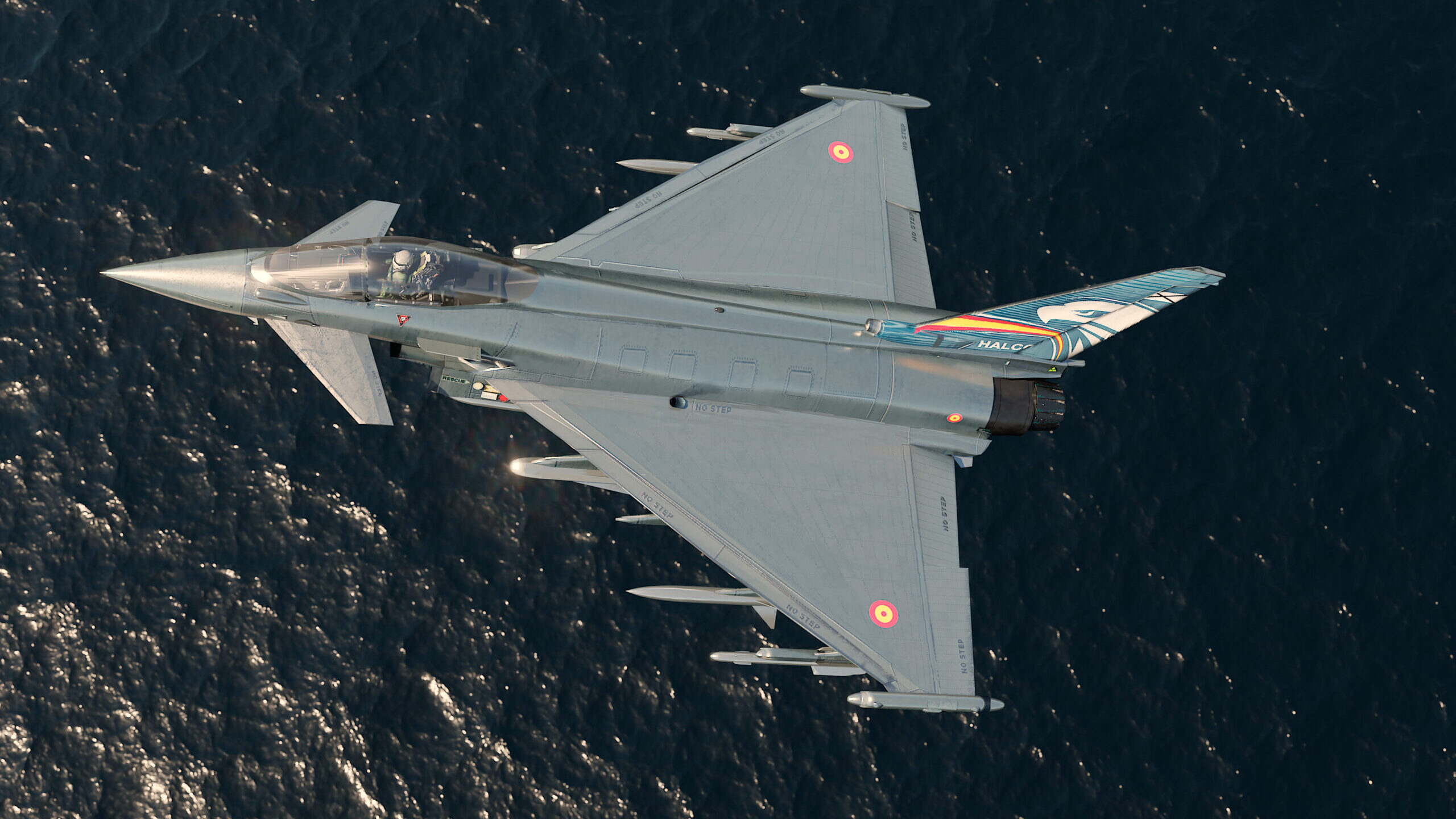
The HALCON version of the Eurofighter. (Credit: Airbus)
MADRID — With Spain pledging to finally hit a NATO spending target by 2029, the top informed officers for the country’s three military branches this week laid out how they would like to spend their new cash.
Speaking on the first day of the FEINDEF exhibition in Madrid on May 17, the Chiefs of Staff for the Spanish Army, Navy and Air & Space Force made clear they are ready to, as one put it, “recover and recuperate lost skills, capacity and capabilities” after a decade of underinvestment in defense.
Setting the scene for the discussion, Eduardo Serra Rexach, Spain’s minister of defense from 1996-2000, described a “long period of isolation” for the country before noting the war in Ukraine had forced the western European nation to increase its defense budget.
“For more than 50 years, Europe has been living in bad habits, protected by the US. We have not realized the importance of defense,” he suggested. “Before the war, few of us defended [a budget increase]. Thankfully that obstacle has been removed and we hope the situation will continue once the war in Ukraine has finished. So far, the MoD has the willingness to increase [the budget]. Let’s see how long the political will lasts.”
According to NATO figures, Spain consistently missed the alliance’s target to spend 2 percent of GDP on defense between 2014 (0.9 percent) and 2022 (1.09 percent), beating only Luxembourg in the most recent figures. Following the Ukraine invasion, the country has now said it will hit that 2 percent target by 2029.
So, what does each service want?
Air & Space Force: Gen. Javier Salto Martínez-Avial, chief of the Air & Space Force, explained that his organization must “recuperate all the capacity and include new technology and innovation,” including recovering from a cut of 5,000 personnel in 2018.
“People are our most valuable resource and we lack that resource. Without people, we cannot use new capability and capacities and cannot sign contracts,” he noted, while also calling for improved sustainability of in-service systems and smart investments for the future: “The air force needs time to materialize requirements. We have to invest prior to the problem and get [products] 8-10 years before we have a problem.”
In June 2022, Spain signed the initial “Halcon” contract for a total of 20 Eurofighter Typhoons from the NATO Eurofighter and Tornado Management Agency. These aircraft, which will be delivered in 2026 and beyond, will replace the current fleet of F/A-18s.
In his comments, Martínez-Avial called for the MoD to sign onto an additional 25 Eurofighter jets as part of the “Halcon 2” program. And he warned not to delay, noting deliveries could take another decade: “It’s important to sign contracts because it takes a long time to get products.”
Martínez-Avial also described a “long-term” objective for the MoD in obtaining a fifth-generation fighter. Although he did not specifically mention a platform, defense sources suggested to Breaking Defense that Lockheed Martin’s F-35 would be favored to replace the remaining EF-18s and AV-8B Harriers operated by the Spanish Navy.
Martínez-Avial also called for improvements to pilot training with “better simulators” and described how the air force must keep “working with industry to gain capacities and get upgrades necessary so we can perform properly.”
Army: Gen. Amador Enseñat y Berea, the Spanish Army’s Chief of Staff, outlined a “shopping list for Santa” to purchase required capabilities in line with the “2035 Brigade” concept.
“The army is closer to turning our dreams into realities,” he described before demanding his service become a “technologically advanced” and “digitally transformed” force.
“It’s not just about materiel and applying emerging and disruptive technologies but also training and doctrine. We have to take this to the battlefield to achieve superiority of information against adversaries.”
Still, technology matters, and the army leader said his wish list includes high mobility rocket launchers; self-propelled mortars; electronic warfare, explosive ordnance disposal and cyber security solutions; autonomous robotic systems; and ability to deal with mass casualty and refugee situations.
He also called for closer integration with the Air & Space Force in terms of air defense, calling for modernizing of Patriot, NASAMS and Mistral in the future.
Navy: The navy’s Chief of Staff, Adm. Piñeiro Sánchez would not be drawn on specific materiel upgrades, instead opting to state that “everything changed” with the ongoing war in Ukraine.
“We are reviewing and rethinking our priorities in defense which allows us to recover lost skills. We are still recovering,” he said before adding “We need emerging, disruptive technology so the navy is still decisive and relevant for Spain’s interests.”
According to Sánchez, the navy is facing several challenges including capacity to assimilate technology and tactics, techniques and procedures (TTPs) identified in Ukraine at pace, and growing the industrial base in a sustainable way.
“It’s not enough to just recover because systems could be obsolete before they enter service given the speed of the revolution. The Chiefs of Staff have agreed we have to recover through modernization and then evolve and do that at the same time. If we don’t, we risk staying obsolete, so we have to do this very quickly,” he concluded.
Air Force awards SNC $13B contract for new ‘Doomsday’ plane
The win is a major victory for the firm in a competition that saw the surprise elimination of aerospace giant Boeing.


























